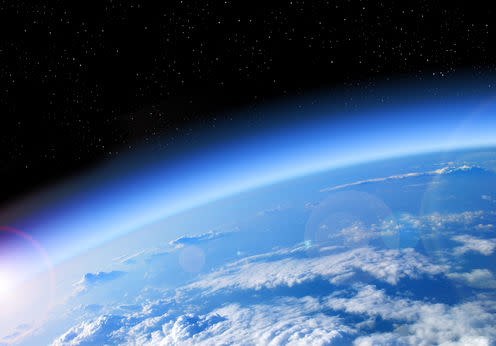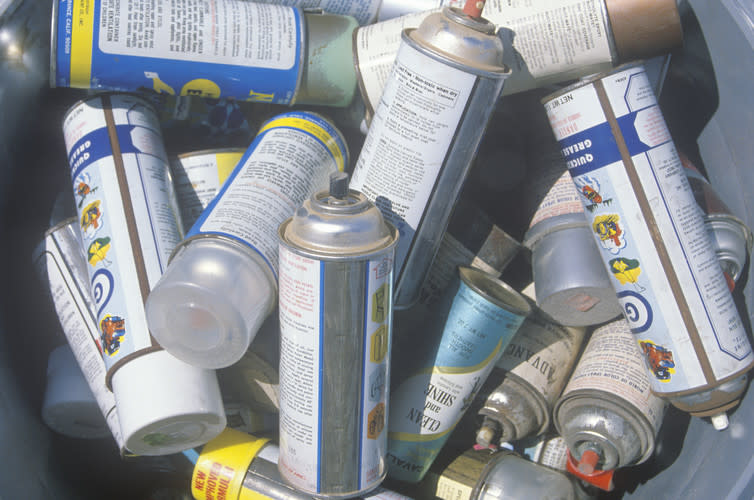The 30-year-old ozone layer treaty has a new role: fighting climate change

The 1987 treaty that stopped the pollution causing a hole in the ozone layer is rightly seen as a major success story. It’s arguably the most successful international environmental agreement ever. It’s true that, 30 years on from the signing of the Montreal Protocol, the Antarctic ozone hole still reappears every year. Yet the protocol really is working and its continued development means that it is doing more good than ever, including helping the fight against climate change.
In 1985, scientists made the unexpected discovery that the Earth’s ozone shield, located in the stratosphere about 20km-30km above the surface and essential for life, contained a huge hole over Antarctica. The cause was quickly established to be chemicals, notably chlorofluorocarbons (CFCs) used as aerosol propellants and refrigerants, which are stable at low altitudes but release ozone-destroying chlorine and bromine when they break down in the upper atmosphere.
It took just two years for intensive research, building on work on ozone depletion from the 1970s, to provide enough evidence for politicians representing every country in the UN to take action. They agreed to limit production of CFCs and other related gases. Signed on September 16, 1987, the Montreal Protocol put the brakes on increasing ozone depletion. This prevented the catastrophic scenarios of large, global-scale ozone depletion that would have severely damaged animal and plant life at the surface through large increases in ultraviolet (UV) radiation. For example, skin cancer rates in humans would have increased greatly.
Despite the success of the protocol, a large Antarctic ozone hole continues to appear every spring in the southern hemisphere. In fact, the hole continued to grow for almost 20 years after the Montreal Protocol was put in place, with the largest hole recorded in 2006. This is because the process by which the atmosphere can cleanse itself of the stable CFC molecules takes many decades.

Even though the emission of these chemicals has now largely stopped, the CFCs already in the atmosphere will carry on releasing their chlorine and bromine for decades to come, as they are slowly broken down by sunlight in the upper atmosphere. As such, the ozone hole will take about three times longer to disappear than it did to appear, eventually closing sometime in the second half of the century. In the meantime, the thinner ozone shield will lead to some increased levels of surface UV and changes to surface winds and temperature, especially in the southern hemisphere.
Even over the past ten years, scientists have struggled to detect the first signs of repair. Polar ozone loss is driven by the formation of stratospheric clouds at low temperatures. This means ozone depletion is worse after colder winters because more cloud particles form. So natural variations in the meteorological conditions in the stratosphere – occasionally enhanced by volcanic eruptions that can replicate the role of the clouds – have helped to mask the small recovery trend.
Despite this, scientists have finally started to observe the expected increase in ozone. Comparing the current behaviour of the atmosphere with detailed computer models that remove the effect of meteorological variations shows that recovery really has started. As a result, researchers have a high degree of confidence that the Antarctic ozone hole will gradually decrease and return to its 1980 size, when it first became detectable, by about 2050. It is now a question of being vigilant for other unknown factors and checking that the recovery proceeds as expected.

Climate change
The process of protecting the ozone layer didn’t end when the Protocol was signed, and it has continually evolved with periodic amendments to place stronger controls on ozone-depleting gases and to bring new ones into the agreement. Most recently it has been drafted into the fight against man-made climate change. The ozone-depleting gases being controlled by the agreement are also very potent greenhouse gases. Like carbon dioxide, they very efficiently absorb infra-red radiation and so contribute to global warming.
In the latest amendment to the Montreal Protocol, signed in 2016, policy makers agreed to limit the emission of the compounds designed to replace CFCs, hydrofluorocarbons (HFCs). These gases, used for example in air conditioning units, do not lead to ozone depletion but are greenhouse gases. So bringing them under the umbrella of the Montreal Protocol will help reduce future climate change.
We all owe a debt of gratitude to the scientists, politicians and industry leaders who created such an effective and flexible agreement which, 30 years on, is doing what it set out to achieve and more.
This article was originally published on The Conversation. Read the original article.

Martyn Chipperfield receives funding from Natural Environment Research Council (NERC), European Union (EU).

 Yahoo News
Yahoo News 
